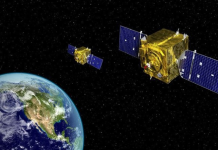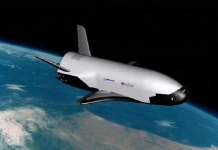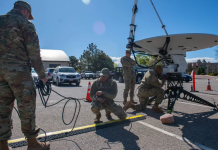WASHINGTON — The Space Force selected teams led by Lockheed Martin and Raytheon to develop competing ground-control systems to operate its next generation of secure communication satellites.
The service said May 2 it awarded $30 million to both teams to develop designs to compete for the Ground Resilient Integration and Framework for Operational Nuclear Command, Control and Communication system. GRIFFON will operate a future fleet of Evolved Strategic Satellite Communications spacecraft designed to withstand a nuclear attack.
“Software is never complete, so acquiring it modularly gives us flexibility for iterative agile updates that are responsive to user needs,” GRIFFON Materiel Leader Lt. Col. Laila Barasha said in the statement. “Industry teams focused on innovation will be able to develop and deliver the ground capability faster for future generations of warfighters.”
The service’s fiscal 2024 budget request includes $216 million for the effort. That funding supports the ground system prototyping activity as well as the creation of a classified development environment.
Perhaps the most notable recent example of this is the Next-Generation Operational Control Segment, or OCX, which will operate GPS satellites. The service was supposed to field the Raytheon-built capability in 2016, but software development issues have delayed that target several times. OCX is now under review as the Space Force sets a new timeline for completing the effort.
The service’s acquisition executive, Frank Calvelli, issued a memo to the service’s development workforce last October, highlighting timely delivery of these capabilities as one of his nine tenets, or guideposts, for improving the Space Force’s acquisition system.
In a May 2 hearing, Calvelli told members of the Senate Armed Services Committee’s Strategic Forces Subcommittee his plan for smoother delivery of ground capabilities involves developing programs in segments, rather than as large, complex systems.
He added that the use of cloud computing environments, which provide a backbone for connecting systems and taking advantage of commercial software applications, could help with the effort.
Source: defensenews.com





